- Home
- Paula Danziger
The Cat Ate My Gymsuit
The Cat Ate My Gymsuit Read online
THE NEW TEACHER
Celeste Sanders was the first to spread the news.
“Hey, we got a new English teacher. A real one, not a sub. First-period class says she looks like a kid.”
“A new one. Let’s walk in backwards.”
“Everyone give her a wrong name.”
“Let’s show her who’s boss.”
Everybody rushed down the halls and into class. Some of the guys started to make and throw paper airplanes. Alan Smith played “Clementine” on his harmonica. He’d learned it from the instructions on a Good and Plenty box. Jim Heston played the Good and Plenty box, and Ted Martin played a comb. There was applause and cheering after the performance. At 1:15 the coughing started.
Ms. Finney just sat there. She didn’t smile or yell or cry or read a paper or do any of the things that teachers normally do when a class gets out of hand. She just sat there and looked at everybody.
Finally it got quiet. Everyone started to squirm. It was really creepy after a while.
“O.K. Give her a chance,” someone muttered.
BOOKS BY PAULA DANZIGER
The Cat Ate My Gymsuit
The Divorce Express
It’s an Aardvark-Eat-Turtle World
The Pistachio Prescription
There’s a Bat in Bunk Five
This Place Has No Atmosphere
PUFFIN BOOKS
Published by the Penguin Group
Penguin Group (USA) LLC
375 Hudson Street
New York, New York 10014
USA * Canada * UK * Ireland * Australia
New Zealand * India * South Africa * China
penguin.com
A Penguin Random House Company
First published in the United States by Delacorte Press, 1974
Published by PaperStar Books, 1998
Published by Puffin Books, a division of Penguin Young Readers Group, 2006
This edition published by Puffin Books, an imprint of Penguin Young Readers Group, 2014
Copyright © 1974 by Paula Danziger
Introduction copyright © 2014 by Ann M. Martin
Penguin supports copyright. Copyright fuels creativity, encourages diverse voices, promotes free speech, and creates a vibrant culture. Thank you for buying an authorized edition of this book and for complying with copyright laws by not reproducing, scanning, or distributing any part of it in any form without permission. You are supporting writers and allowing Penguin to continue to publish books for every reader.
THE LIBRARY OF CONGRESS HAS CATALOGED THE PAPERSTAR EDITION AS FOLLOWS:
Danziger, Paula, date.
The cat ate my gymsuit.
Summary: When the unconventional English teacher who helped her conquer many of her feelings of insecurity is fired, a junior high student uses her new found courage to campaign for the teacher’s reinstatement.
[1. School stories. 2. Teachers—Fiction.] I. Title.
PZ7.D2394Cat [Fic] 74-8898
ISBN: 978-1-101-66582-4
Version_1
To John Ciardi
because he dedicated a book to me,
because he is my good friend and teacher,
and because he never collects gin-rummy debts
A NOTE FROM PAULA
The year was 1970. I was teaching junior high school English. I had not written fiction since college, although I always dreamed of being a writer.
Then disaster struck! My car was hit from behind at a stop sign. It was not serious, but six days later a drunk driver hit the car I was in, a head-on collision. That was serious. I had not only orthopedic problems but also a head injury that caused dyslexia.
I began to think that if I really wanted to be a writer, I had better do it before I got run over by a truck.
I started to write about what I knew best . . .an overweight girl who had problems in school, with her family, and with her self-image. I also wrote about her favorite teacher, who was in trouble for political beliefs and actions. (The book was written during the Vietnam War, a time of political unrest.)
It took three years of hard work, both physical and emotional, to write the book.
When I was finished, I showed it to one of my professors, Jerry Weiss, who worked for a publishing company. He took the manuscript to the publishers and they brought it out in 1974.
Since this book is so autobiographical, it is immensely important to me.
—Paula Danziger
Contents
The New Teacher
Title Page
Copyright
Dedication
A Note from Paula
Introduction
Chapter 1
Chapter 2
Chapter 3
Chapter 4
Chapter 5
Chapter 6
Chapter 7
Chapter 8
Chapter 9
Chapter 10
Chapter 11
Chapter 12
Chapter 13
Chapter 14
Chapter 15
Chapter 16
Chapter 17
Chapter 18
Special Excerpt from There’s a Bat in Bunk Five
INTRODUCTION
If a Prince Charming or a Prince Semi-Charming came up to my door and said, “Rosie Wilson, you are the most beautiful, individualistic fourteen-year-old in the universe,” I certainly wouldn’t slam the door in his face.
This is the first line of Paula Danziger’s hilarious and moving It’s an Aardvark-Eat-Turtle World. First lines fascinate me, and this one says a lot about Paula, her stories, and her characters. The author of over thirty titles for young adult readers, Paula was known for capturing her audience with her uncanny ability to tap into teenage psyches—to write realistically and unflinchingly about families, divorce, friendship, first love, insecurity, and injustice, and to do so with a wicked sense of humor. It’s rare for a reader to find herself laughing out loud, then just a few sentences later, searching for tissues in order to wipe away tears. Paula courted difficult, sometimes controversial subjects; her self-effacing characters and her love of humor made her books compelling reading.
Paula herself was as memorable as any character she created. She made friends wherever she went and was passionate about them. Somehow each of us felt as if we were Paula’s best friend. She was flamboyant and flashy. She tied colorful scarves around her head, wore as many oversize rings as possible on her fingers, and shopped with great joy for glittery sneakers and sequined purses. She liked video games and slot machines. She once managed to light one of her fake fingernails on fire. The first time I spent a weekend at her house, she offered me a breakfast of Coke, M&Ms, and Circus Peanuts.
Paula was a marvel of disorganization. I’ve never seen anything like the inside of her purse. It was a jumble of loose bills and coins, receipts, lipstick cases, candy, lint, notebooks, keys. She frequently lost her keys, or thought she had, and a dramatic search would ensue before they were located, surprise, at the bottom of her purse. Her desk was worse, overflowing with larger items.
Yet out of this chaos sprang books that have resonated with readers for decades. Paula’s first book, The Cat Ate My Gymsuit, was published in 1974. Thirteen-year-old Marcy, the protagonist, may wear panty hose, buy records for her stereo, and never have heard of cell phones, but it doesn’t matter because she faces the same issues contemporary kids face:
All my life I’ve thought that I looked like a baby blimp with wire-frame glasses and mousy brown hair. Everyone always said that I’d grow out of it, but I was convinced that I’d become an adolescent blimp with wire-frame glasses, mousy brown hair, and acne.
Marcy’s story continues in There’s a Bat in Bunk Five whe
n she experiences her first love while at summer camp:
This thing with Ted isn’t a crush . . .. What if I let myself start to care and get hurt? I’m not sure I can survive a broken heart. I get hurt so easily anyway, so I’ve never let myself get too close to a guy, not that there have been that many opportunities. I’m scared. What if it turns into a real relationship and it’s as bad as my parents’ marriage?
In The Pistachio Prescription Paula tackles divorce as Cassie Stephens’s family begins to crumble. In later books, other characters face the aftermath of divorce, but this story chronicles the Stephenses’ slide from dysfunctional, a theme Paula visits often, to separation. In a scene from the beginning of the book, Cassie visits her friend Vicki:
We sit down with her parents. Nobody fights at the Norton house. At least not while I’m there. Vicki says that they do fight sometimes, but that it’s psychologically healthy to air feelings honestly. I don’t know if my family does it honestly, but if awards were given on the basis of yelling, we’d win the Mental Health Award of the century. I guess we’d probably be disqualified, though, on the basis of lack of sanity.
I smiled when I read that paragraph. But later the tone of the story changes:
[My father] walks over. “Cassie, I’m sorry it didn’t work out. I guess your mother’s right. There’s no use pretending we can get along. It’s over and that’s all there is to it.”
That’s all.
As simple as that.
Three kids.
A broken-up family.
Yet the ending is hopeful. Cassie realizes her family may not be the one she wishes for, but that she’ll survive.
Rearrange the letters in the word PARENTS and you get the word ENTRAPS. This’s how The Divorce Express begins. Four years after the publication of The Pistachio Prescription Paula writes about Phoebe, who shuttles between her father’s home in Woodstock, New York, and her mother’s home in New York City. Travel is the least of Phoebe’s concerns, though. Now her parents are seeing other people:
Maybe I’m a prude, but I don’t like to think about my parents having sex with anyone but each other.
Phoebe analyzes the stages parents go through when they get divorced:
. . .the fighting and anger—then the distance—and making me feel caught in the middle. After the divorce they try to be “civilized.” I know that there were even times that they missed each other. I know for a fact that after the divorce they even slept with each other once in a while. It was confusing. Now they act like people who have a past history together, but only a future of knowing each other because of me.
By the end of The Divorce Express, Phoebe’s father has fallen in love with the mother of Rosie, Phoebe’s new best friend, and their story continues in It’s an Aardvark-Eat-Turtle World, told from Rosie’s point of view. All Rosie wants is a happy family, but Phoebe doesn’t make that easy. Furthermore, Rosie, who’s biracial, faces issues that Phoebe can’t fathom, and once again, Paula writes candidly about a sensitive subject, illustrated in this scene when Rosie goes on a date with a boy who’s white:
While we look at each other, some guy comes up and says with hate, “Why don’t you stick to your own kind?”
I can’t believe it.
He repeats what he’s just said.
Jason turns to him. “We are the same kind—human. You’re the one who isn’t our kind. You’re scum.”
A year later, Paula’s next book, This Place Has No Atmosphere, was published and the setting is, of all places, the moon in 2057—a bold departure for Paula, who made the colony on the moon seem real and believable, and who drew us into the life of Aurora Williams on the first page. The book feels futuristic indeed, but Aurora’s story of adjusting to a move and finding a serious boyfriend is timeless.
Paula died in 2004, but her stories have already been passed from one generation of passionate fans to another. Her many best friends miss her, but I like to think of the hope with which she ends her books. She wrote great last lines, too. If you take the letters in the word DIVORCES and rearrange them, they spell DISCOVER.
Thank you, Paula, for showing us captivating beginnings, hopeful endings, and in between, how to look at life with laughter.
CHAPTER 1
I hate my father. I hate school. I hate being fat. I hate the principal because he wanted to fire Ms. Finney, my English teacher.
My name is Marcy Lewis. I’m thirteen years old and in the ninth grade at Dwight D. Eisenhower Junior High.
All my life I’ve thought that I looked like a baby blimp with wire-frame glasses and mousy brown hair. Everyone always said that I’d grow out of it, but I was convinced that I’d become an adolescent blimp with wire-frame glasses, mousy brown hair, and acne.
My life is not easy. I know I’m not poor. Nobody beats me. I have clothes to wear, my own room, a stereo, a TV, and a push-button phone. Sometimes I feel guilty being so miserable, but middle-class kids have problems too.
Mom always made me go to tap and ballet lessons. She said that they’d make me more graceful. When it came time for the recital, I accidentally sat on the record that I was supposed to dance to, and broke it. I had to hum along with the tap dancing. I sing as badly as I dance. It was a disaster.
Father says that girl children should be born at the age of eighteen and married off immediately.
Stuart, my four-year-old brother, wants to be my best friend so that I can help him put orange pits in a hole in his teddy bear’s head.
I’m flat-chested. I used to buy training bras and put tucks in them.
I never had any friends, except Nancy Sheridan. She’s very popular, but her mother and mine are PTA officers and old friends, so I always figured that Mrs. Sheridan made her talk to me—Beauty and the Blimp.
School is a bummer. The only creative writing I could do was anonymous letters to the Student Council suggestion box. Lunches are lousy. We never get past the First World War in history class. We never learned anything good, at least not till Ms. Finney came along.
So my life is not easy.
The thing with Ms. Finney is what I want to talk about. She took over for Mr. Edwards, our first English teacher. He left after the first month. One rumor is that he had a nervous breakdown in the faculty lounge while correcting a test on noun clauses. Another is that he had to go to a home for unwed fathers in Secaucus, New Jersey. I personally think that he realized that he was a horrible teacher, so he took a job somewhere as a principal or a guidance counselor.
When Mr. Edwards left, we got a whole bunch of substitutes. None of them lasted more than two days. That’ll teach the school to group all the smart kids in one class. We were indestructible.
The entire class dropped books, pencils, and pens at an assigned time. Someone put bubble gum in the pencil sharpener. Nancy pulled her fainting act. We made up names and wrote them on the attendance list. All the desks got turned around. Mr. Stone, the principal, kept coming in and yelling.
And then Ms. Finney came.
CHAPTER 2
Celeste Sanders was the first to spread the news.
“Hey, we got a new English teacher. A real one, not a sub. First-period class says she looks like a kid.”
“A new one. Let’s walk in backwards.”
“Everyone give a wrong name.”
“Let’s show her who’s boss.”
Everybody rushed down the halls and into class. Some of the guys started to make and throw paper airplanes. Alan Smith played “Clementine” on his harmonica. He’d learned it from the instructions on a Good and Plenty box. Jim Heston played the Good and Plenty box, and Ted Martin played a comb. There was applause and cheering after the performance. At 1:15 the coughing started. A few kids didn’t do anything, but I did. I really didn’t like what was happening, but if you’re a blimp with fears of impending acne, you go along with the crowd.
Ms. Finney just sat there. She was young and wore a long denim skirt, a turtleneck jersey and had on weird jewelry—giant earrings tha
t hung down to her shoulders, and a macrame necklace. She didn’t smile or yell or cry or read a paper or do any of the things that teachers normally do when a class gets out of hand. She just sat there and looked at everybody.
Finally it got quiet. Everyone started to squirm. It was really creepy after a while.
“O.K. Give her a chance,” someone muttered.
We all looked around to see who was talking. It was Joel Anderson, the smartest kid in the class. When almost everybody else would be fooling around, he would sit there reading a book. Some of the kids thought he was a little weird, but everybody usually listened to him.
He put his book down, looked at Ms. Finney, and said, “Are you going to teach us anything?”
Somebody giggled.
The class got very quiet.
I looked at Joel and thought how brave and smart and cute he was. We’d been in the same classes since kindergarten, but I hadn’t said more to him than “Hi” and “What’s the homework assignment?” I didn’t like to embarrass anyone by having them be seen talking to me.
Ms. Finney stood up, looked at the class, smiled, turned to the blackboard, picked up a piece of chalk, and wrote:
“Ms. Barbara Finney.”
Turning around again, she smiled and said, “That’s my name. I’m your new English teacher, and I hope this year is going to be a good one for all of us.”
I thought about that. First of all, she’d written “Ms.” Was she just trying to be sharp, or was she really into it? And she’d written her first name. Teachers never do that. They never admit to having first names. They’re always Miss or Mr. or Mrs., hardly ever Ms., and never with first names. It’s supposed to be a big mystery, like do teachers really have to go to the bathroom or do anything but teach and go to meetings?
She spoke again.
“I decided to be an English teacher because I care about people communicating with people. That’s why I’m here. I want to do it and help you all to do it too, as effectively as possible. A poet named Theodore Roethke once said, ‘Those who are willing to be vulnerable move among mysteries.’ Please, let’s try to move among mysteries together.”

 Amber Brown Horses Around
Amber Brown Horses Around Amber Brown Is Green with Envy
Amber Brown Is Green with Envy I, Amber Brown
I, Amber Brown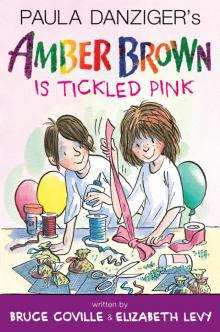 Amber Brown Is Tickled Pink
Amber Brown Is Tickled Pink Amber Brown Is Not a Crayon
Amber Brown Is Not a Crayon You Can't Eat Your Chicken Pox, Amber Brown
You Can't Eat Your Chicken Pox, Amber Brown This Place Has No Atmosphere
This Place Has No Atmosphere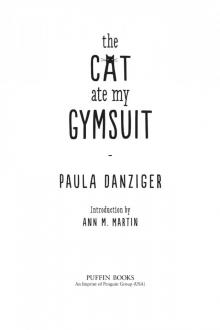 The Cat Ate My Gymsuit
The Cat Ate My Gymsuit Amber Brown Goes Fourth
Amber Brown Goes Fourth Forever Amber Brown
Forever Amber Brown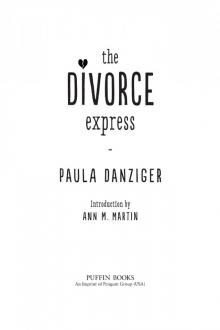 The Divorce Express
The Divorce Express It's an Aardvark-Eat-Turtle World
It's an Aardvark-Eat-Turtle World Amber Brown Wants Extra Credit
Amber Brown Wants Extra Credit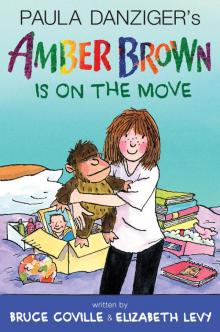 Amber Brown Is on the Move
Amber Brown Is on the Move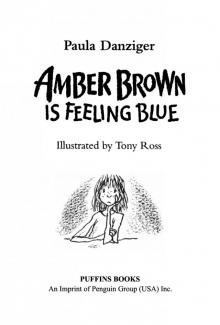 Amber Brown Is Feeling Blue
Amber Brown Is Feeling Blue Amber Brown Sees Red
Amber Brown Sees Red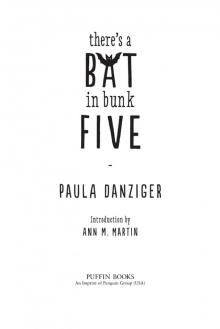 There's a Bat in Bunk Five
There's a Bat in Bunk Five